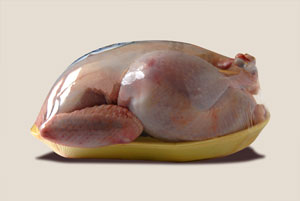 Food safety isn’t a very glamorous topic; however, amid the more recent food recalls, being food safe is incredibly important.
Food safety isn’t a very glamorous topic; however, amid the more recent food recalls, being food safe is incredibly important.
For most individuals, food safety means washing your hands – a lot! Yet there is much more to food safety than simple hand washing procedures. As the holidays rapidly approach, getting food safe can be a critical component in keeping your loved ones healthy and happy. Don’t let them be one of the hundreds of thousands of people who get sent to the hospital each year due to food poisoning.
The Four Rules of Food Safety
Clean: Yes, clean your hands, clean your food, and anything else that your food might come into contact with. While washing, make sure you give it a good go and scrub for at least 20 seconds. This will help rid your hands, your food, and your surfaces of pesky germs that can make you sick.
Separate: Ready-to-eat foods and raw ingredients are not friends! They need to be kept separate from grocery cart to cutting board. Keep meat, poultry, seafood, and eggs away from other foods throughout the entire prepping process to best ensure that nothing gets contaminated.
Cook: Did you know that different foods have different food safe temperatures? It’s true! If you haven’t yet invested in a food thermometer, you may want to consider purchasing one. A food thermometer can measure the internal temperature of the food you cook and help you identify whether your food has been cooked thoroughly. To help you identify what temperatures to look for, the most important numbers to remember are 40 and 140. The “danger zone,” or the temperature in which foods are most likely to attract the bad bacteria, is between the temperature range of 40 and 140 degrees Fahrenheit. It’s important to limit the amount of time your food may sit in this degree range. Other numbers are important too, like the temperature individual foods need to be cooked to for optimum safety. The website foodsafety.gov has an excellent table to help you further explore these ranges.
Chill: That bad bacteria that grows best in the “danger zone” also has a time limit. Perishable foods need to be refrigerated within two hours after eating. If the temperature outside is greater than 90 degrees Fahrenheit, cut that time in half. It’s also important to refrigerate your food in small portions to help decrease the amount of time it takes for your food to get to a safe temperature level.
Lastly, if something looks or smells bad, throw it out. Its better to be safe than severely sick later.
Also Read:
